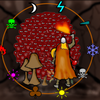

Mathematics, game development, art, roguelikes, hyperbolic geometry. Sometimes all at once.
This profile is from a federated server and may be incomplete. Browse more on the original instance.

Mathematics, game development, art, roguelikes, hyperbolic geometry. Sometimes all at once.
This profile is from a federated server and may be incomplete. Browse more on the original instance.